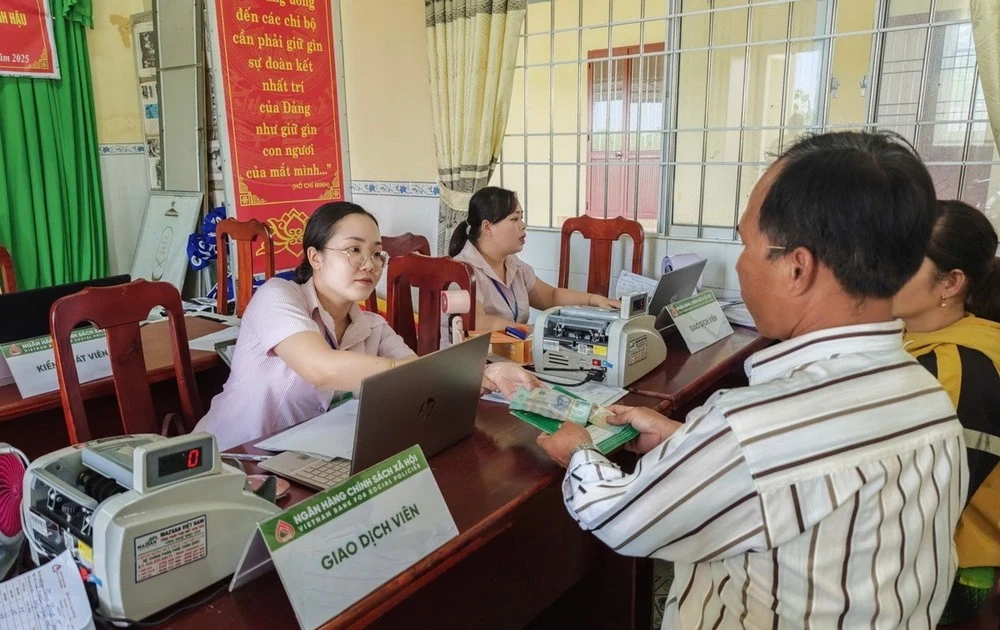Xuan Dai Bay in Xuan Dai Ward (Dak Lak Province) is known for its bustling marine aquaculture sector, with dense clusters of cages and floating farms.
However, the area now lies in ruins. Numerous cages, boats and watch huts were swept away or destroyed by powerful waves. According to local resident To Sy Hoai, his family owned two floating fish farms. Before the storm made landfall, they managed to move their lobsters to a safe location, leaving only other types of seafood on the cages. When the storm hit, all cages and watch huts were washed away, causing an estimated loss of nearly 30 million VND. The family is now working to rebuild the cages to resume farming.
Preliminary data from the Fisheries and Islands Sub-Department under Dak Lak’s Department of Agriculture and Environment show that around 54,000 cages were damaged, with estimated losses of about 1.9 trillion VND (72.1 million USD) — roughly 30% of total capacity.
Chairman of the Song Cau Ward People’s Committee (Dak Lak Province) Vo Ngoc Thach said around 70 fishing boats from Song Cau and Xuan Dai wards, anchored in Vung Chao for shelter, sustained serious damage during the storm. Meanwhile, 60–70% of local aquaculture cages were damaged, including 1,600 lobster cages.
At the Vung Chao anchorage, dozens of boats were partially or completely destroyed by strong winds and waves. Truong Dinh Trung, a fisherman in Song Cau Ward, said his boat — though anchored in a designated shelter — still suffered hull damage and engine failure, causing losses worth hundreds of millions of Vietnamese dong.
According to preliminary statistics from the Department of Dyke Management and Natural Disaster Prevention and Control (Ministry of Agriculture and Environment), as of the morning of November 9, Storm No.13 and its circulation had damaged more than 54,300 aquaculture cages, including 54,000 in Dak Lak and over 300 in Gia Lai. A total of 18 hectares of shrimp and fish farms were affected, and 99 boats were sunk or damaged.
The Fisheries Port Authority of Gia Lai reported that strong winds and heavy rain severely damaged multiple structures at fishing ports, most notably Quy Nhon Fishing Port, where the fish-sorting facility lost its entire roof and supporting beams, affecting an estimated 3,000m².
Le Thi Diem, a seafood trader at Quy Nhon Fishing Port, said goods had been swept away and business had come to a halt. She hopes authorities will soon repair the sorting facility so trading can resume.
De Gi and Nhon Ly fishing ports in Gia Lai also suffered extensive damage, with fish-sorting facilities, electricity and water systems, operations buildings and storage areas destroyed.
According to Director of the Fisheries Port Authority Dao Xuan Thien, total losses at the three ports are estimated at around 20 billion VND (759,000 USD). Delayed repairs would significantly affect seafood trading activities.
Timely financial support is considered crucial to help affected residents stabilise their lives and resume production. The Dak Lak provincial People’s Committee has approved an additional 35 billion VND (1.3 million USD) from its 2025 contingency budget to assist the worst-hit communes and wards — 17 localities in the province’s eastern area.
The Ministry of Agriculture and Environment is urgently directing localities to implement coordinated recovery measures, restore agricultural production, and promptly report losses. It is also working with relevant agencies to address requests for supplies, chemicals and breeding stock to ensure environmental sanitation and revive the fisheries sector as quickly as possible.
In addition to central and local support, organisations, businesses and philanthropists are mobilising resources to aid storm-affected communities. Timely material and emotional support reflects the spirit of compassion and solidarity as people nationwide extend a helping hand to those in storm-hit regions.
















